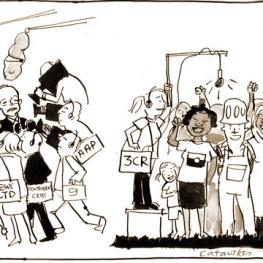
Community Radio in Context
Media of the people: broadcasting community media in Australia
by Dr Rhonda Jolly, Department of Social Policy
Australia has one of the highest concentrations of commercial media ownership in the world and it has been argued that this has led to a dearth of sources of opinion from which people can glean information and make informed decisions about politics and social issues.
The existence of public service broadcasters has helped to counter a lack of media diversity and the rise of new forms of social media has delivered another means through which alternative viewpoints can be aired. A further source of media diversity, one often overlooked, is the community media in all its forms.
What defines community media is the subject of considerable debate. It has been described in many ways—as participatory or citizen media, radical media or alternative media.
One thing is agreed—community media contributes significantly to the pool of media voices available. Community broadcasting in particular, as an alternative medium to public service and commercial media, fosters citizen participation and helps to preserve cultural diversity, while promoting an overall ‘Australian-ness’.
Most importantly, since its beginnings community media has been local media – the voices of communities that echo their interests and concerns.
Survival is difficult for broadcasting community media because they most often operate on small budgets, receiving a fraction of the support which the Federal Government provides to public sector broadcasters and operating largely as a result of support from the communities they service.
The broadcasting community media in Australia is more a source which fosters participation than radical idealism; it is the voice of ordinary Australians who mostly do not seek to reorient the world, but to ensure everyone gets a ‘fair go’.
It is alternative in that it provides a form to promote cultural diversity within the framework of an overall national culture and in that it delivers strong local voices in a media environment which is increasingly homogenous.
From the Parliament of Australia Parliamentary Library Research Paper ‘Media of the people: broadcasting community media in Australia’, by Dr Rhonda Jolly. Published 2 April 2014. Available online: www.aph.gov.au
This article is part of the CBAA's Political Engagement Toolkit for community broadcasters.
Facebook comments